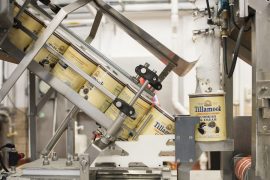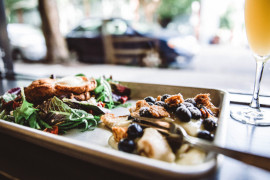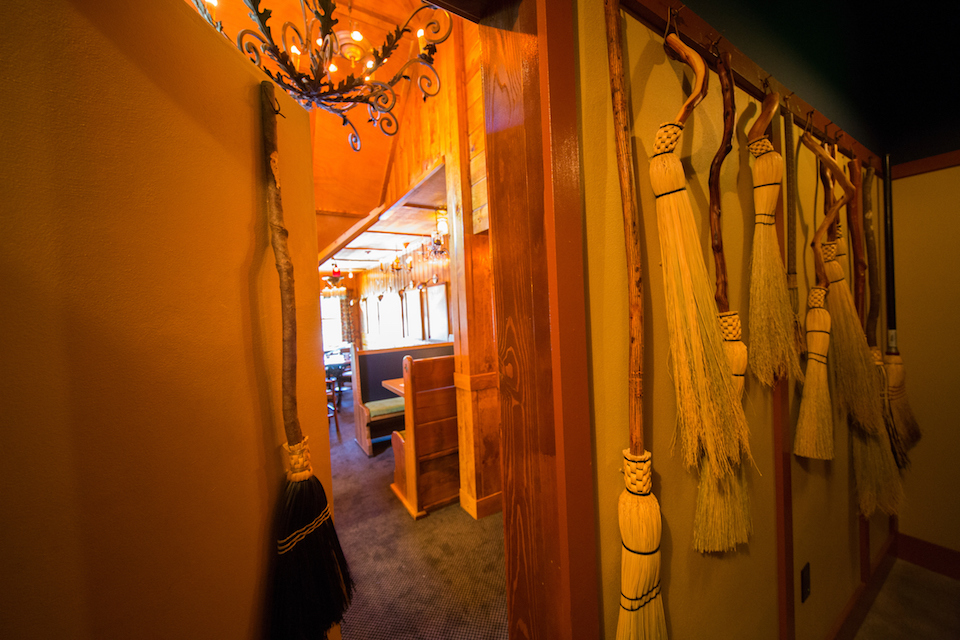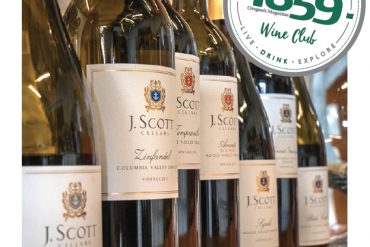DIY Coffee Roasting
A fan for cooling the beans, stir stick (we discovered that a metal stir stick is better), green beans, French press, sealable jar for finished beans, colander for assisting with the cooling process (we didn’t end up using it, but maybe we should have), sample beans for comparison, a baking sheet on which to dump hot beans, mugs, and a roaster/popper. Not photographed: can with top and bottom removed.
Before starting, we asked for tips from roasters and online forums. We also requested some of Lone Pine’s roasted beans to compare color, flavor, etc. All parties highly recommended we partake in this activity outdoors for odor and mess reasons. We wholeheartedly agree.
Disclaimer: We are not authorities on this. Try at your own risk.
Do it Yourself Coffee Roasting Step 1:
Pour ¾ c. green beans in popper. Turn on Popper. Stir vigorously.
Commentary: We quickly added the can with top and bottom removed because stirring over a popper is HOT. Coffee beans also act much like Mexican jumping beans when hot air is involved. Be careful. Even with our vigor, we couldn’t keep the heat from building too much and after a couple of minutes, the popper overheated and shut down. We dumped the beans onto the cooling sheet and let the machine cool down before returning the beans to the popper to heat again. This was probably our first misstep on the long road to tasty beans.
Do it Yourself Coffee Roasting Step 2:
Roast for 5 minutes.
Commentary: This is including our machinery malfunction. We were somewhere in the “first crack” stage when we stopped. The “crack” is a sound similar to dry wood crackling in a campfire. The outer shells of the beans shed and float out into the air like translucent husk confetti… and end up covering the ground for a 10 foot radius. Hence, the outdoor locale.
Do it Yourself Coffee Roasting Step 3:
Dump onto baking sheet. Put fan blast directly onto beans to cool as quickly as possible.
Commentary: Beans seemed overcooked, even though we were told to roast beans until the end of the first crack or beginning of second. Where did we go wrong?
Do it Yourself Coffee Roasting Step 4:
Grind. Brew. Drink.
Commentary: Our tasting notes include a burnt aroma, overly acidic taste and a finish comparable to reheating yesterday’s coffee in the microwave (come on, we’ve all done it). Guess we won’t be packaging the 1859 Signature Blend any time soon.
We tried two more roasts, with even less success. The beans seemed to turn to charcoal the longer we roasted them and the “second crack” never materialized. Nonetheless, it was an incredibly valuable experience. Upon reflection, we’ve realized that the nuance of coffee roasting is part science, part art. I learned that there is nothing added to coffee but beans and heat. The caramel, nutty, cinnamon and other fantastic flavors are developed simply via roasting method and type of bean. A veritable magic trick, in my eyes. My coworker, Guy, realized that any grandiose notion he had of opening his own local coffee shop and settling down to a quiet life of spectacles, reading and sipping Guy Brew is utter fantasy.
Good luck in all your brewing endeavors and hats off to all our fantastic Oregon roasters.







